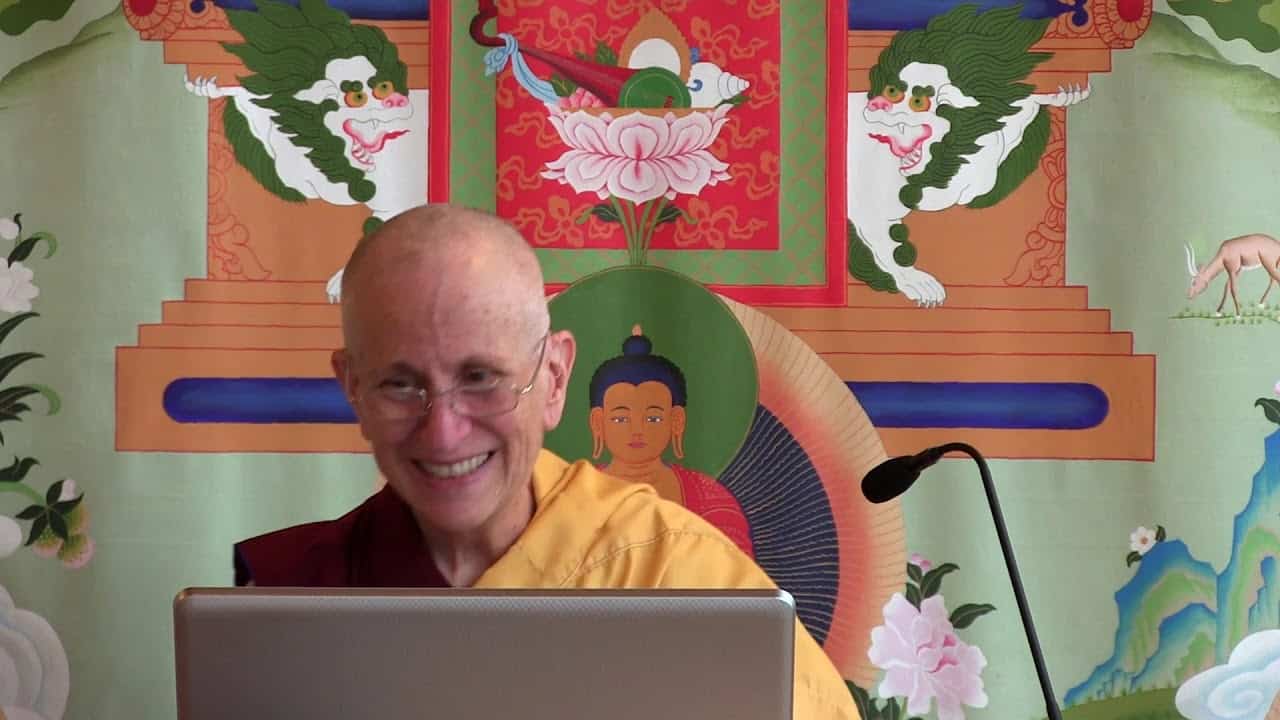Illusion-like appearances
Illusion-like appearances
The text turns to training the mind on the stages of the path of advanced level practitioners. Part of a series of teachings on the Gomchen Lamrim by Gomchen Ngawang Drakpa. Visit Gomchen Lamrim Study Guide for a full list of contemplation points for the series.
- What makes something mine?
- The actual meaning of illusion-like appearances
- The incorrect way that is mistaken for illusion-like appearances
- No specific meditation for illusory nature to occur
- What it means for the world to be the result of karma and afflictions
129 Gomchen Lamrim: Illusion-Like Appearances (download)
Contemplation points
- Consider some of the things you say to yourself (i.e. I’m lazy. I contribute so much and no one appreciates me. I’m worthless. I’m so exhausted.). Take some time to really investigate the kinds of thoughts that go through your own mind. Notice how it all revolves around a big “I.” Going through the exercises we’ve been learning in these teachings on emptiness, what is it that feels so solid? What can you point to that is a real self?
- Once we have a strong “I,” “mine” quickly follows (i.e. MY hoodie, MY child, etc). Reflect on this sense of “mine.” When something becomes yours, does the object seems to change from it own side? What afflictions arise for you in relation to “mine” and how does that cause difficulty in your life?
- In meditative equipoise on emptiness, a practitioner does not see conventional objects, only emptiness. When a practitioner comes out of meditation on emptiness, things appear to the mental consciousness as “illusion-like.” The eye consciousness sees the conventional object, but the mental consciousness knows it doesn’t exist in the way it appears. That does NOT mean that the object does not exist. Why? What is the danger of adhering to this wrong view of nihilism?
- If we can recognize that a reflection in a mirror is like an illusion, why does that not mean we have realized the emptiness of inherent existence? How does studying the illusion-like appearance of a face in a mirror help us realize emptiness?
- We often think the self arises from physical causes and conditions, our bodies the result of sperm and egg, all the food we’ve eaten, etc. The text, however, states that we arise from afflictions, karma, and so forth. Consider this point, how and why the true causes for this life are afflictions and karma.
Venerable Thubten Chodron
Venerable Chodron emphasizes the practical application of Buddha’s teachings in our daily lives and is especially skilled at explaining them in ways easily understood and practiced by Westerners. She is well known for her warm, humorous, and lucid teachings. She was ordained as a Buddhist nun in 1977 by Kyabje Ling Rinpoche in Dharamsala, India, and in 1986 she received bhikshuni (full) ordination in Taiwan. Read her full bio.


